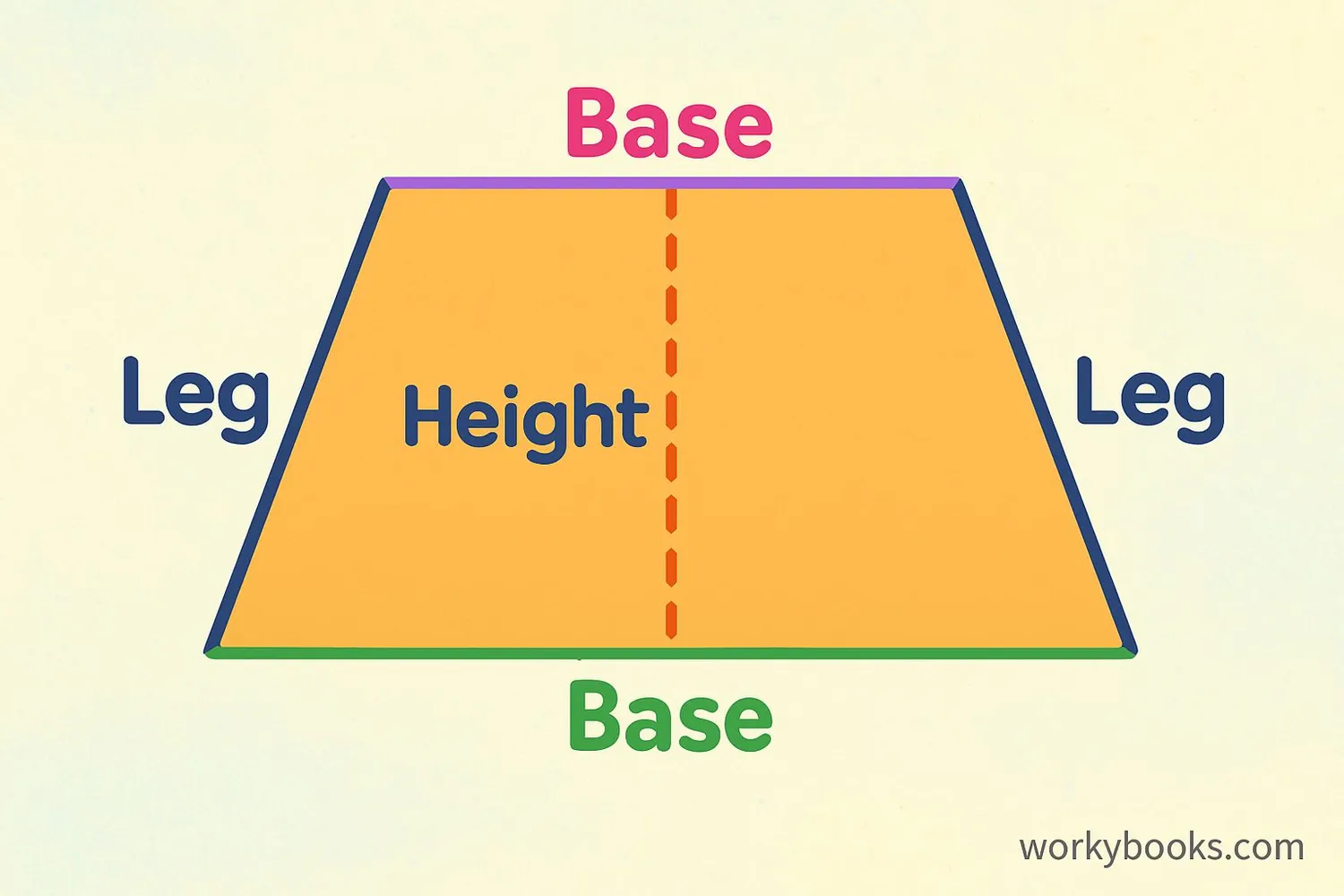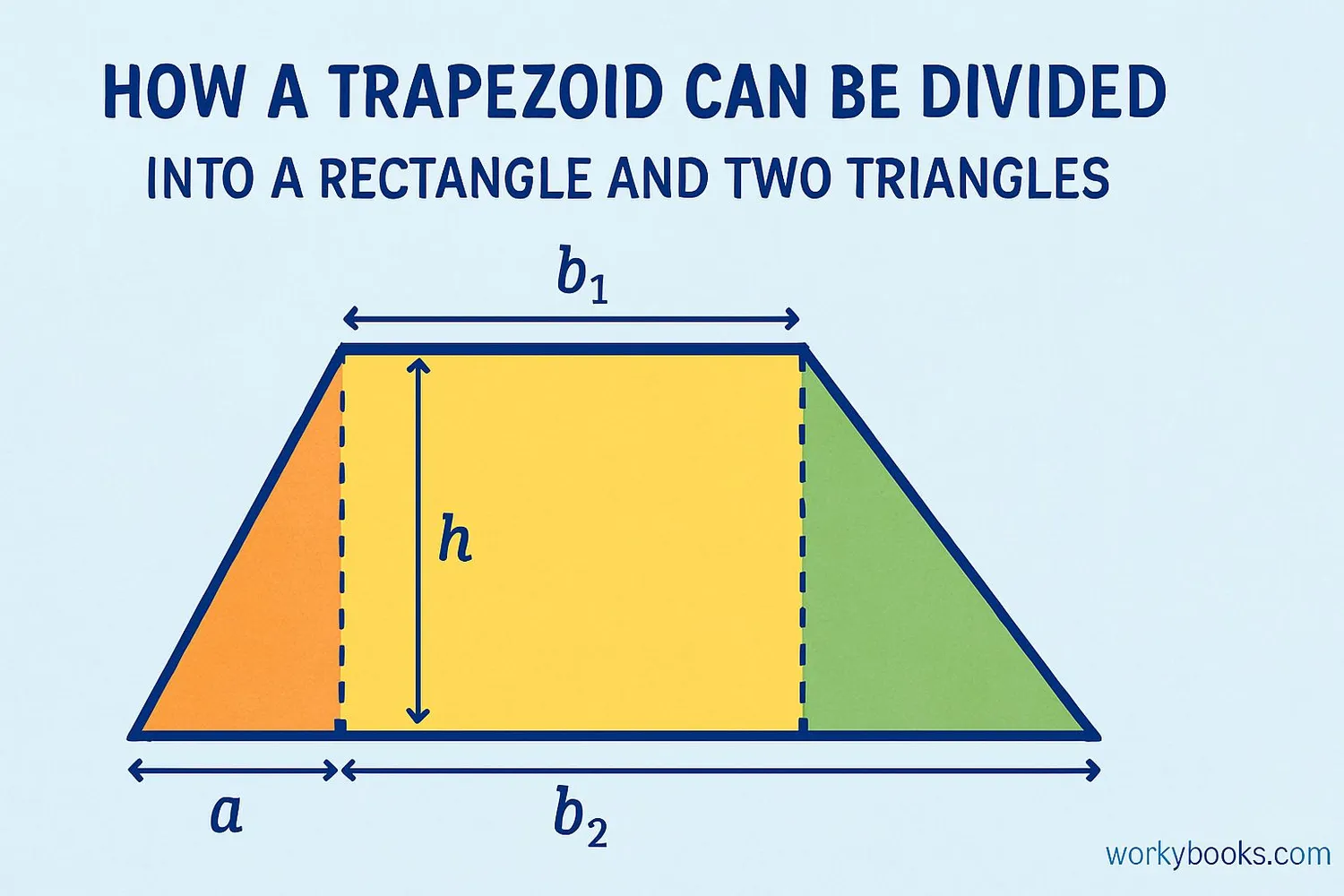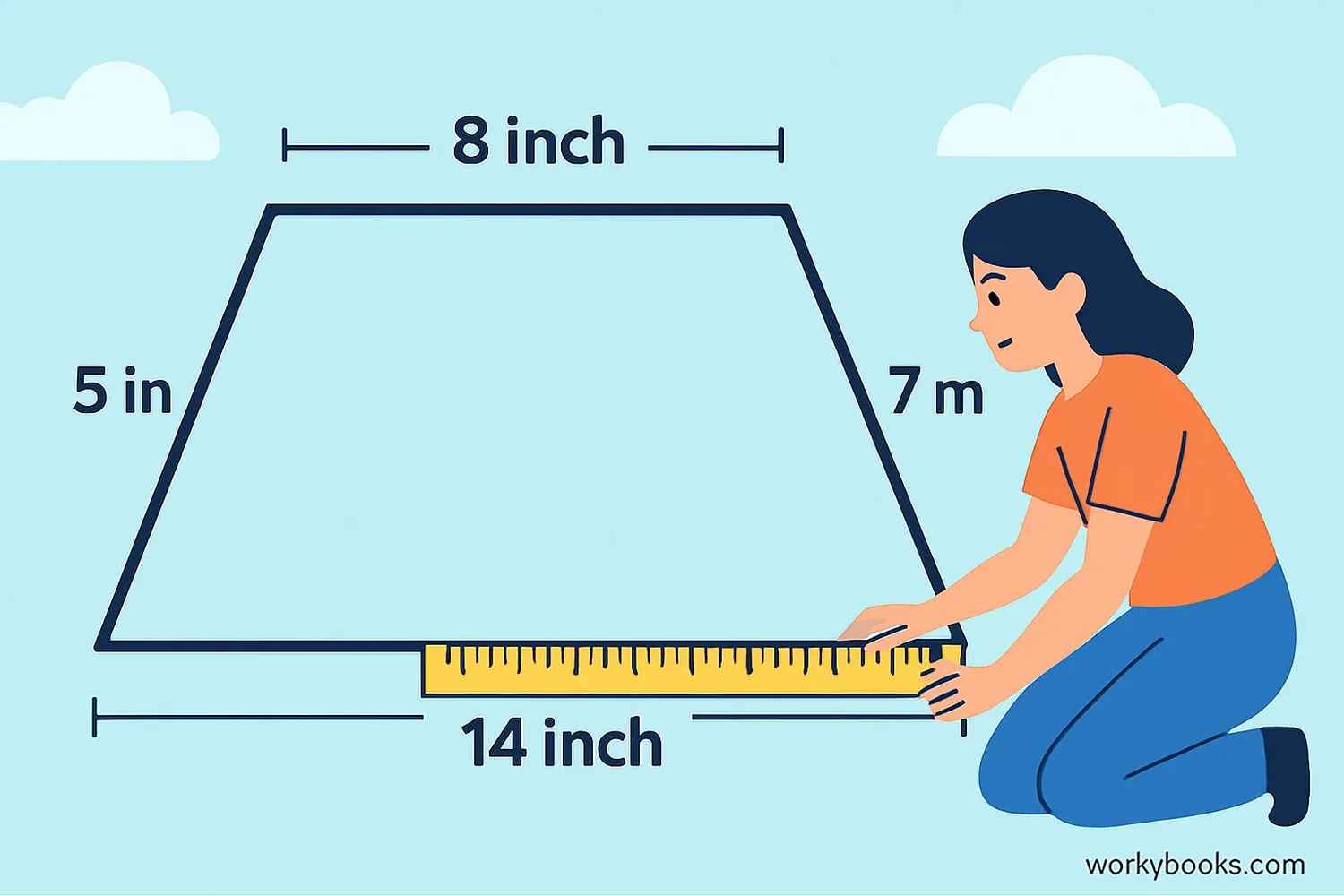Trapezoids - Definition, Examples, Quiz, FAQ, Trivia
Learn about this special quadrilateral with easy explanations, examples, and practice activities
What is a Trapezoid?

A trapezoid is a special quadrilateral with exactly one pair of parallel sides. These parallel sides are called the bases of the trapezoid. The other two sides are called the legs.
The height (or altitude) of a trapezoid is the perpendicular distance between its two bases. Remember that the legs are not necessarily equal, and the angles are not necessarily right angles unless it's a special trapezoid.
In some countries, a trapezoid is called a trapezium. But no matter what you call it, it's an important shape in geometry that you'll see in many real-world objects!
Key Concept
A trapezoid is a quadrilateral with exactly one pair of parallel sides. The parallel sides are called bases.
Area of a Trapezoid

To find the area of a trapezoid, we use a special formula:
Area Formula
Where b₁ and b₂ are the lengths of the two bases, and h is the height.
Example: Find the area of a trapezoid with bases of 8cm and 5cm, and height of 4cm.
Step 1: Add the bases → 8 + 5 = 13
Step 2: Multiply by height → 13 × 4 = 52
Step 3: Take half → 52 ÷ 2 = 26
Step 4: Add units → 26 cm²
So the area is 26 square centimeters. Remember to always include units in your answer!
Remember
The height must be perpendicular to the bases. The legs are not used in the area calculation.
Perimeter of a Trapezoid

Finding the perimeter of a trapezoid is simple! The perimeter is the total distance around the shape. To calculate it:
Perimeter Formula
Where a, b, c, d are the lengths of all four sides.
Perimeter = Base₁ + Base₂ + Leg₁ + Leg₂
Example: Find the perimeter of a trapezoid with sides 5cm, 7cm, 3cm, and 4cm.
Solution: 5 + 7 + 3 + 4 = 19cm
Notice that we don't need to know which sides are parallel to find the perimeter - we just add all the side lengths together!
Perimeter Tip
Perimeter is measured in regular units (cm, m, ft), while area is measured in square units (cm², m², ft²).
Types of Trapezoids
Trapezoids come in different varieties. Here are the three main types:
Isosceles Trapezoid
Has equal leg lengths and equal base angles. The non-parallel sides (legs) are congruent.
Right Trapezoid
Has two right angles (90°). One leg is perpendicular to both bases.
Scalene Trapezoid
Has no equal sides or angles. All sides and angles are different.
Isosceles trapezoids are symmetrical - if you fold them along their center, both halves match perfectly. This makes them useful in architecture and design.
Right trapezoids are common in real-world objects like tables, buildings, and road signs because of their right angles.
Scalene trapezoids are the most general form with no special properties beyond having one pair of parallel sides.
Remember
All trapezoids have exactly one pair of parallel sides. If a quadrilateral has two pairs of parallel sides, it's a parallelogram!
Trapezoid Practice Quiz
Test your knowledge with this 5-question quiz. Choose the correct answer for each question.
Frequently Asked Questions
Here are answers to common questions about trapezoids:
Geometry Trivia
Discover interesting facts about trapezoids and geometry:
Ancient Geometry
The word "trapezoid" comes from the Greek word "trapezion," which means "a little table." Ancient Greek mathematicians like Euclid studied trapezoids over 2,300 years ago in their geometry books.
Strong Shape
Trapezoids are structurally strong shapes. Engineers often use trapezoidal designs in bridges and buildings because they distribute weight efficiently, making structures more stable and durable.
Space Geometry
NASA uses trapezoidal shapes in spacecraft design. The solar panels on the International Space Station are arranged in trapezoidal shapes to maximize sun exposure while minimizing weight.
Largest Trapezoid
The world's largest trapezoidal structure is the Bent Pyramid in Egypt. Built around 2600 BC, its lower section rises at a 54-degree angle, while the upper section rises at a 43-degree angle, creating a trapezoidal shape.





